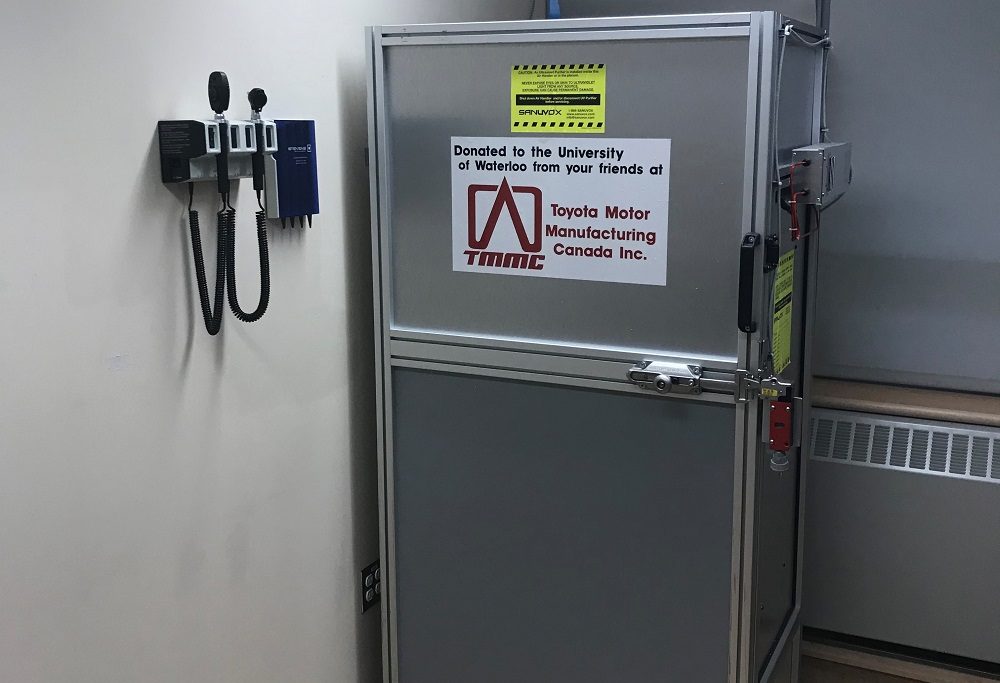Toyota Canada Builds PPE Disinfecting Machine for University of Waterloo
Toyota Motor Manufacturing Canada put its manufacturing expertise to design a new PPE disinfecting machine that will be used at the University of Waterloo.
The machine is intended to clean personal protective equipment contaminated by COVID-19. Toyota hopes its machine will reduce the strain on supplies for PPE as well as reduce concerns surrounding the wasteful nature of current PPE, which are typically thrown out after a single use.
Toyota University: Get educated about top Toyota vehicle features
Designed and built by engineers at TMMC in Cambridge, Ontario, the PPE disinfecting machine was donated to the Department of Chemical Engineering and Health Services at the University of Waterloo, though it is only a prototype.
It uses Ultraviolet C light to sterilize not only PPE but also other tools. Researchers can load contaminated items onto a portable, wheeled rack before rolling it inside the machine. Special safety-rated latches secure the door. The items are then exposed to several UVC lamps inside a reflective chamber for about five minutes.
“The initial testing will help identify potential opportunities for modifications or improvements,” said Professor Bill Anderson from the Department of Chemical Engineering at the University of Waterloo, who is leading the testing of the prototype. “These might involve changes to the rack materials or layout, to achieve specific purposes or to accommodate certain items.”
COVID-19: How Toyota Canada is handling the pandemic
Originally, Toyota meant to use the PPE disinfecting machine at its own manufacturing plants. When production operations were suspended in March, engineers were tasked to improve their ability to disinfect PPE and tools within Toyota’s plants. But by the time the automaker was ready to mass-produce the machine, its plants had reopened with new control processes that proved effective enough not to warrant building more machines.
Fred Huard, senior engineering analyst at TMMC, concluded: “We had done all this work to create the prototype, and we felt that someone else might be interested in developing it further.”
Kurt Verlin was born in France and lives in the United States. Throughout his life he was always told French was the language of romance, but it was English he fell in love with. He likes cats, music, cars, 30 Rock, Formula 1, and pretending to be a race car driver in simulators; but most of all, he just likes to write about it all. See more articles by Kurt.


